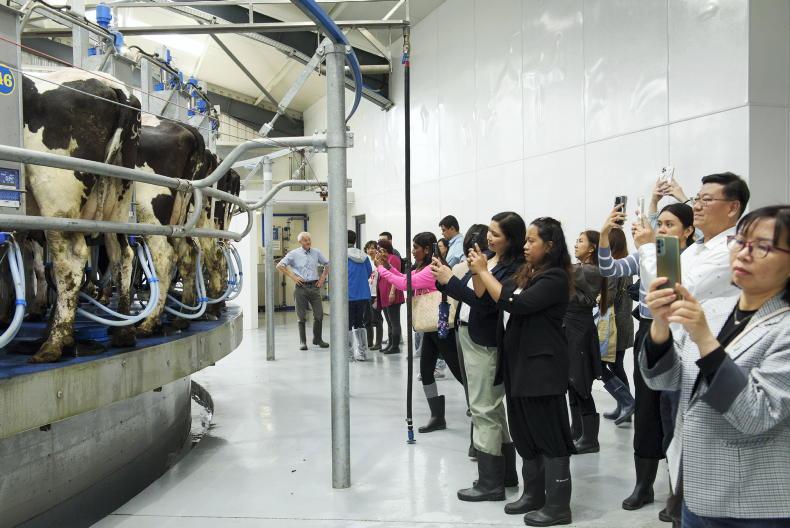It has been a tough year so far for Irish dairy farmers. Difficult weather, stubbornly high input costs and falling milk prices have brought farm profitability significantly below what has been experienced in recent years.
Last year was an unprecedented year for dairy as global dairy commodity prices soared to record levels. These record dairy commodity prices were reflected in farmgate milk prices, with farmers worldwide receiving elevated prices for much of 2022.
Of course, this price positivity was countered with higher farm input costs across feed, fertiliser and energy.
Increased 2022 supply
Understandably, farmers in Ireland and across the world capitalised on the record prices by producing more milk, leading to higher milk output from the major dairy exporters and a shift in the supply-demand balance in favour of dairy buyers.
This additional supply was one of the factors influencing the weakened demand indicators seen in European and international dairy markets which began in the autumn of 2022.
A further factor was the high cost of goods and the ongoing challenge of addressing energy and other cost of living issues for consumers.
Challenge
Affordability became a real challenge for consumers and this was evident across butter and cheese markets in Europe, as well as powder markets in Africa and Asia.
As a consequence, international buyers took a step back from the market and began to change their purchasing behaviour from a stock-building “just in case” mentality to a stock-minimising “just in time” mentality.
At the time of writing, European average price for butter, skim milk powder, whole milk powder and whey are 40%, 65%, 51% and 70%, respectively, behind where they were at this stage last year.
Global milk supply
Global milk supply for the first half of 2023 has been strong, with collections from the top five dairy exporters up 0.7% cumulatively on last year. This hasn’t been the case in Ireland, where we’ve seen milk collections for the first six months of the year fall by 0.9%, although primarily as a result of challenging weather conditions.
The weakening indicators seen towards the latter end of 2022 have accelerated. Dairy demand has come under pressure this year, with rising interest rates, inflation and affordability, as a result, impacting all markets.
Declining global commodity and farmgate milk prices have yet to be reflected at consumer level, with expensive product acquired in 2022 and early 2023 still to make their way through supply chains. This has resulted in month-on-month depreciations in European and Oceania pricing indices, with the GDT index having fallen close to 20% so far this year.
Outlook
The outlook to the end of the year is challenging. There are early signs that global milk production has begun to slow, with the US recording high dairy cow slaughters and combined milk supply for the top five dairy exporters flat in June when compared to June of last year.
The current production season is just kicking off in New Zealand, and above-average grass growth over the winter months and into spring bodes for strong milk production in the early part of the season.
After falling close to 20% year-on-year last year, it was hoped that Chinese import demand would rebound this year but, so far, that hasn’t been the case.
For the last 12 months, Chinese dairy imports remain 4% behind the previous 12 months, as the industry rebalances following a period of rapid domestic supply growth (from 30.4m metric tonnes in 2017 to 39.3m metric tonnes in 2022), excess inventory as a result of record 2021 import volumes and softer demand growth.
What is Bord Bia doing?
Bord Bia will continue to work hard in seeking out the best customers for Irish dairy. A busy programme of events is planned for remainder of the year, with pre-arranged buyer seminars taking place in Vietnam, Thailand, Malaysia the Philippines and Japan with the objective of raising the awareness of Ireland as a sustainable, secure and safe supplier of dairy ingredients.
Through these events, Bord Bia aims to engage with 250 key dairy buyers. Alongside these events, Bord Bia and the Irish dairy industry will be in attendance at key trade shows such as Food Ingredients Europe and Anuga which both take place in Germany this year.
There will also be a ministerial-led trade mission to Malaysia and the Philippines in November, which coincides with a number of events organised as part of Ireland’s multiannual EU co-funded campaign aimed at promoting awareness of dairy from Ireland in these regions.






 This is a subscriber-only article
This is a subscriber-only article






